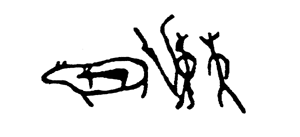The first electric boats -
the source of the electric power
by Heather Hobden
William Sargeant
(born 1836), who was commissioned to build the Mary Gordon, like many Victorian engineers, was originally trained as a clockmaker.
By 1898, Sargeant was building electric boats and floating charging stations, which had been commissioned by
Moritz Immisch
(born 1837). Originally a prize-winning watch and clock maker. By 1880, he was working on the development and manufacture of electric motors in association with
Magnus Volk
- originally a clock and scientific instrument maker. Volk's most famous achievement is the world's first electric railway - which has been delighting holiday makers on trips along the beach at Brighton since 1883. In 1887 Volk worked with Immisch and
Anthony Reckenzaun
to design the world's first electric motor car. The body of the car was built by the Sussex Coach Works, Brighton. The batteries were from the
Electrical Power Storage Company
which had produced the first electric river launches commercially since 1882, at their works by the Thames dockland, in Millwall. The EPS Company made the batteries. The first electric launch they made - called "Electricity", was designed by Reckensaun. It had an steel hull, was 25 feet (7.6m) long. The design of the launches, was improved by Yarrow at their Poplar shipyard.
All the battery cells and motors and other machinery on the electric boats was concealed under the seats and deck. This meant that the electric launches could accomodate a much greater number of passengers than the already popular steam launches, and in greater comfort. Not only did the weight of the machinery spread across the bottom of the hull make for a more stable vessel - it was also cleaner and easier to operate. These river launches were mainly used for summer leisure excursions, on which passengers in the late 19th century tended to dress very formally by modern standards with lots of white. They appreciated the clean comforts of the electric launches which did not shower them with hot steam, smoke and soot.
The large number of secondary battery cells enabled a launch to run for about six hours at an average speed of about 8 miles per hour, but then
the batteries needed recharging.
Immisch, went into partnership with Viscount Bury in 1887, to build the world's first electric fleet of launches and the recharging stations needed to keep them going. These were built at intervals along the shores of the Thames. In addition, floating charging stations - the first built by William Sargeant. With Immisch motors, and Electric Power Storage Company batteries, no one need get stranded in the Thames. Anybody who was anybody, just had to have a riverside house with mooring on the Thames and electric launches conveyed the rich and famous and royal, between their riverside homes and social events.
The sizes of the electric launches
varied from 20 to 90 feet in length. Larger, grander launches were built with teak or mahogany hulls. There was enough space in the centre for a salon. These were well appointed with stained glass windows, silk curtains, velvet cushion covers on the chairs, and separate lavatories for ladies and gentlemen. The 70 ft. (11 m.) Mary Gordon was such a luxury pleasure craft. She could carry 75 adults or 120 children in comfort.
Launches like the Mary Gordon were also commissioned as pleasure craft on other lakes, in the Lake District, and
elsewhere -
Reckenzaun established a shipyard to make electric boats in the USA - New Jersey. From the many Thames shipyards, launches were exported all over the world - some specially commissioned by oriental potentates with exotic furnishings.
The electric boat was to be
replaced by the oil fueled engine
by the beginning of the First World War.
| Immisch motor |
 |
Electric Power Storage Company
battery cells showing teak mountings
to guard against acid leaks |  |
| The arrangement of teak battery cells and motor in an early E.P.S. launch. |
 |
cross section showing the batteries
arranged below the deck and seats. |  |
An early launch
designed by Sargeant. |  |
Illustrations from Electricity In The Service Of Man, 1897 edition.
| This article was written by Heather Hobden and is the copyright of Heather Hobden. | The Cosmic Elk  |





